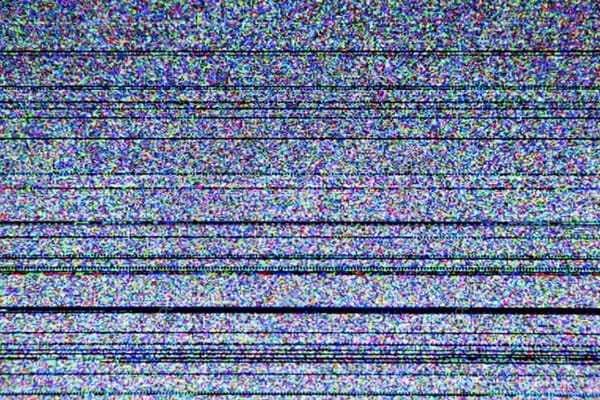The wrong sort of girl: Modern witches on Netflix's Fear Street
The movie trilogy visits three historical eras to put a distinctly contemporary spin on witch lore.
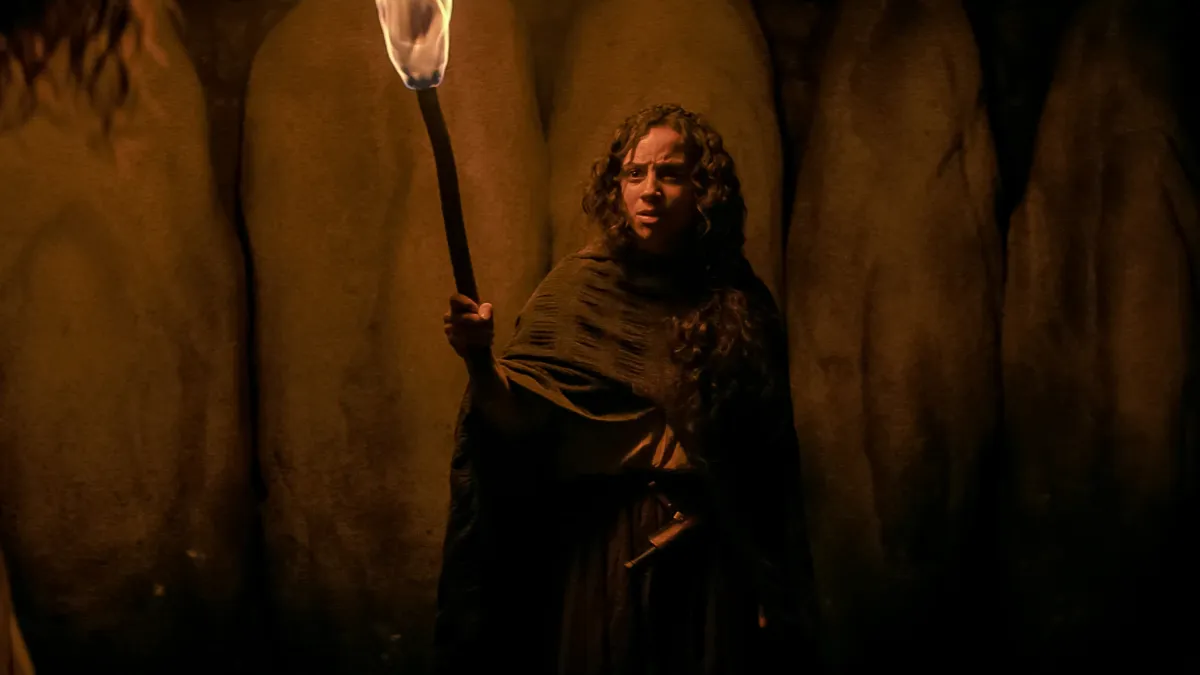
(Welcome to the Wednesday newsletter! Each week, I’m publishing a new pop culture essay from a freelancer. Remember: Your subscription fee helps me pay these freelancers for their efforts! This week: Amy Lee Lillard on the witchery afoot in Netflix's Fear Street trilogy.)
When women don’t follow the rules, bad things happen.
That’s the heart of witch lore. Put aside the caricatures and the Halloween costumes. When it comes down to it, a woman who doesn’t smile on demand, who centers their anger and love rather than a man’s needs, who even loves other women — they are something unnatural and dangerous. A witch.
This dehumanizing narrative powers much of our Puritan history. But it’s also the chaotic and surprisingly-earnest basis for Netflix’s Fear Street trilogy. The movies, released over three Fridays in July, are loosely based on the R.L Stine young adult thrillers.
The Fear Street trilogy centers on the girls who have always been told they’re unnatural. Wrong. They’re working class. They aren’t white or straight. They’re the ones no one believes and no one trusts. They’re the ones who may try hard to follow the rules but will never be allowed to reap the benefits.
What happens when these wrong, witchy girls fight back anyway? Under the creative guidance of Leigh Janiak, Stine’s thrillers become something unique and satisfyingly queer, a witch tale we need.
Part 1 — 1994: “Maybe you have a little witch in you”
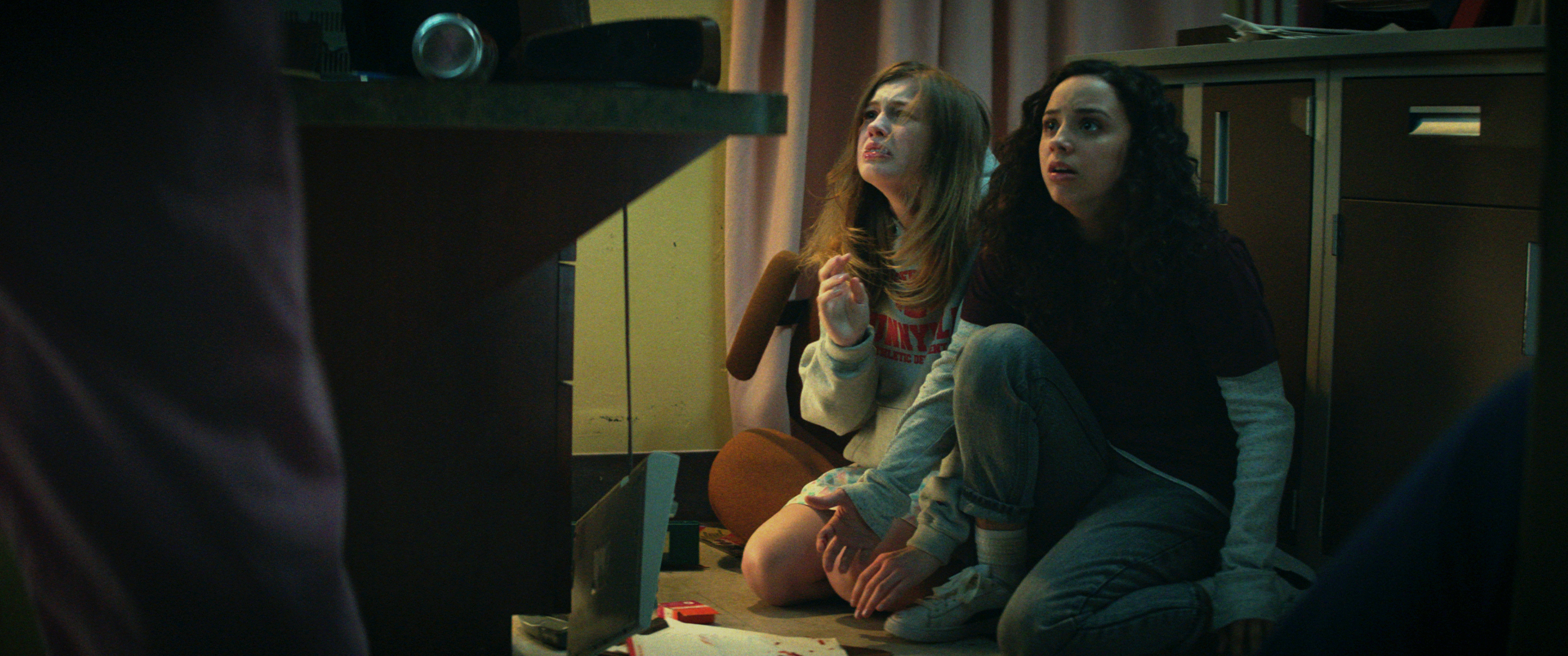
The trilogy follows two towns: Sunnyvale, filled with mansions with white columns and white families, and Shadyside, with boarded-up windows, kids of color, queer kids, and outcasts.
Shadyside is also home to a dark curse. Every few years, someone snaps and goes on a killing spree. Perhaps a wicked witch named Sarah Fier, the legend goes, is responsible for the curse plaguing Shadyside.
Deena, played by Kiana Madeira, is a senior who sees a grim future of “a night shift, a day shift, and a million empty beer cans.” She’s reeling from a break-up with her ex-girlfriend, Sam, played by Olivia Scott Welch. She scoffs at the stories of witches her friends gleefully repeat, while also wholeheartedly believing that Shadyside is cursed.
One thing horror movies get right about teenagers is their embrace of violent legends. Young adults are glib about murder. Perhaps because real life often sucks, especially for outsiders, teens think taunting fate won’t hurt. Is it any wonder slasher films grew to such popularity? Only with gore and extreme violence can you break past the walls of disillusioned teens.
So it’s appropriate that Fear Street 1994 is a slasher movie. It deliberately echoes 1990s era movies like Scream, complete with a black hooded, masked figure at the center of the killings. It nods to the tropes of sarcastic teens, “last night on earth” sexy times, and the teens’ quick recognition and acceptance that adults won’t save them.
But the teens in this movie aren't affluent. They have absent parents, dead parents, deadbeat parents. They work double shifts and sell drugs to support their families. They yearn for more, and are told by self-righteous Sunnyvalers they can have more if they just apply themselves, just try harder. They could be "the right kind of people" if they just follow the rules. And in Shadyside, not following the rules… well, that makes you a witch.
It’s no mistake the first Fear Street is set in 1994, when the rules to become one of "the right kind of people" were on full display. Pat Buchanan made bank after famously proclaiming at the 1992 Republican convention that feminism “encourages women to leave their husbands, kill their children, practice witchcraft, destroy capitalism and become lesbians.” Indeed, the Republican Party began to evolve into the one we know today in the 1980s. Religious zealots riding a wave of Satanic panic and backlash against women’s rights preached the white supremacy gospel of pulling yourself up by your bootstraps. And they allied with conservatives, like Ralph Reed and the Moral Majority, to stack Congress in the 1994 elections.
“The right people will prevail” is also a standard message in horror movies. The final girl is always white and hetero. She survives while the Black characters and gay characters are slaughtered. She’s a nice girl just trying to live. Fear Street subverts this. Our hero is a poor, queer woman of color. And she is pissed off.
By the end, Deena reconnects with Sam, fights the curse, and wins — at least until the classic horror fake-out at the end. Deena will have to look to the past, to a lone survivor of the previous mass murder, to truly end the curse.
Part 2 — 1978: “There is no end.”
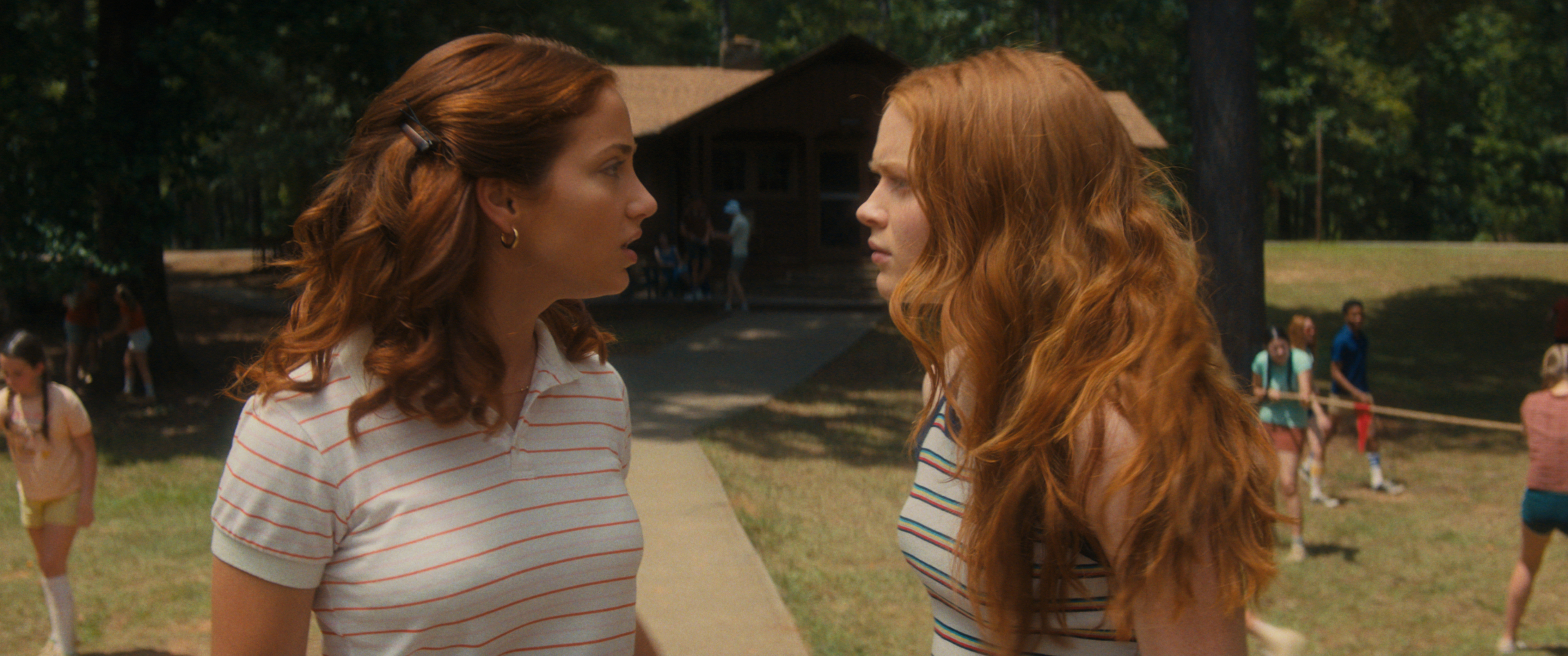
Fear Street 1978 opens in 1994, on one C. Berman, played by Gillian Jacobs. She’s the sole survivor of the 1978 massacre, and she lives in a house with a wall full of alarm clocks. Those alarms are meant to remind her to eat, to feed the dog, to mark a 5000th day off her calendar. This existence — this Shadyside existence — is the curse come to life. After all, surviving a mass murder is gonna fuck a person up.
When Deena arrives for help, C. Berman tells the story of 1978 at Camp Nightwing, a sweaty summer camp turned ax murderer hell, straight out of Friday the 13th and other classic slasher films of the ‘70s and ‘80s. But again, this is Shadyside, where stories are not merely for the powerful. The tropes powering classic slashers have been flipped upside down.
We meet two sisters: Cindy, the elder, played by Emily Rudd, and Ziggy, the younger, played by Stranger Things’ Sadie Sink. Cindy tries so hard to be perfect, to follow the rules, to cling to rationality and practicality. In that way, she hopes to escape. Ziggy is convinced Shadyside is cursed. She leaves a trail of graffiti, punched noses, and scorched earth behind.
Cindy’s perfect boyfriend snaps and turns into an ax murderer roaming the camp. As the sisters work to survive, following a treasure hunt of Sarah Fier lore, they reconnect and realize some core truths. Cindy, like all rule followers, learns the rules don’t apply to those who will keep her down. Ziggy, like all who try to become someone else entirely, finds her new persona doesn’t solve all of her problems. They will never be the right kind of people. They will never escape Shadyside life (or death).
It’s crushing, the bloody finale. Only one girl will live to tell the tale. But no one will believe her. No one believes girls telling stories of survival that are inconvenient and complex. But Deena, for the movie returns to 1994 near its end, believes this survivor, and she uses the truth for one final quest. Through a bit of wonderful witchy magic, she’s thrust back into the mind of Sarah Fier, in 1666, and into the third movie in the trilogy.
Part 3 — 1666 (and 1994 again): “This doesn’t feel wrong”
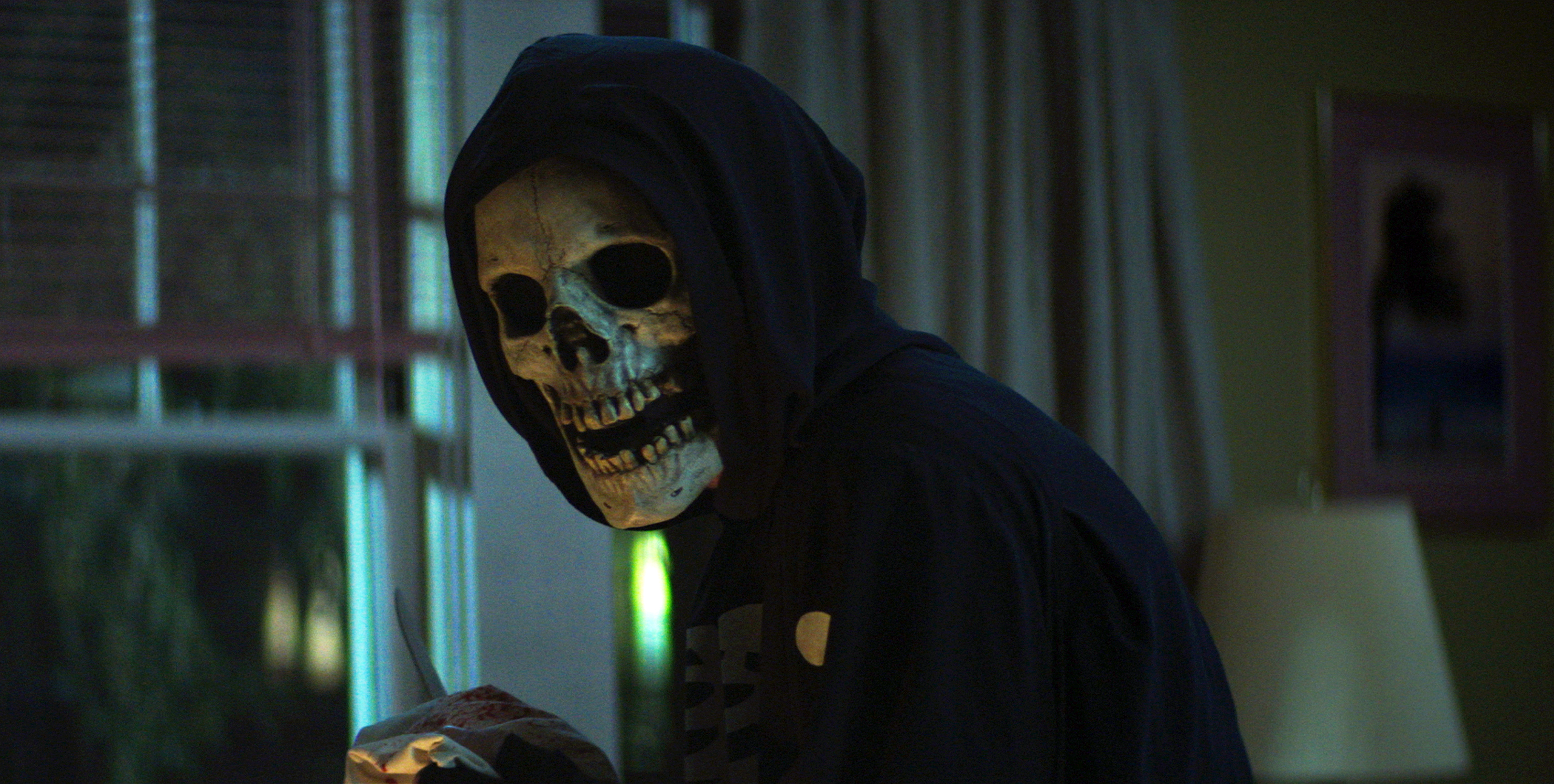
Zooming back to the year 1666, to a Puritan settlement full of dogma and brutal punishment brings incredibly potent horror. There’s no slashing here. There are no axe murderers. There’s limited gore. The fear is grounded in the community, in the people. In what they will do to those who are different.
All the actors we’ve seen so far return to play their ancestors. The same actor who played Deena returns as Sarah Fier, and the same actor who played Sam returns as Hannah Miller, the pastor’s daughter. We see them flirt, kiss, have sex. We see them question why they feel this way, this supposedly sinful yet life-giving way, but do it anyway.
Then things go very, very wrong. The community’s food rots. The farms’ pigs eat their young. The pastor snaps, killing 12 children. What do people do when pushed to the brink? No matter if this is 1666 or 2021, people look to blame. They look to sacrifice someone, anyone, to save themselves. And everyone knows unnatural women are surely witches.
In the past two movies, the killers were possessed by a dark spirit; in this film, the town itself becomes a killer, a mob hopped up on God and bloodlust. The townspeople hunt the two young girls they know. Betrayal of this magnitude, where neighbors and family members willingly, eagerly, hand you over to chains and a rope — that’s true horror.
Viewers have heard about Sarah Fier’s fate over the last two movies. As we watch the final film, we know what’s coming. But this time, we see the horrible face of who’s really behind the darkest secrets of Shadyside’s past. We see how Sarah comes to be known as a witch and the horror of her public hanging.
As this gutting vision lifts, we jump back to 1994, to Deena, who now knows the truth. An elaborate final showdown at the mall offers plenty of slasher blood and guts. But this grand finale ultimately centers Deena’s fight against entitlement and white supremacy personified, against men, against their willingness to discredit, blame, and even kill us.
In this trilogy, the witches win. Deena prevails. She saves herself, her love, her town. The curse is ended, and the power of love and truth is reaffirmed.
For now, at least. There’s a post-credits scene, because of course there is. In life and in horror movies, ending the darkness is rarely that easy.
Episodes is published three times per week and edited by Emily VanDerWerff. Mondays feature her thoughts on assorted topics. Wednesdays offer pop culture thoughts from freelance writers. Fridays are TV recaps written by Emily. The Wednesday and Friday editions are only available to subscribers. Suggest topics for future installments via email or on Twitter. Read more of Emily's work at Vox.

